1910’s Annual Training – Summer Camp – Annual Encampments
Posted on Feb 19, 2025 in 1910's, HING History1910
The following year no regular encampment took place, but a Camp of Instruction for Infantry Officers was conducted at Fort Shafter by the regular army. The purpose of this camp was to give the National Guard officers experience in handling regular troops.
– History of the Hawaii National Guard pp. 60
1911 22nd-27th of May
In 1911 the camp was increased to include not only officers but also noncommissioned officers and cooks. Although this failed to grant any instruction to the file of the National Guard, nevertheless it gave them a number of efficient and experienced key men, around whom the organization could be effected.
– History of the Hawaii National Guard pp. 60
A camp of instruction was held May 22-27, 1911, for officers, non-commissioned officers and company cooks of the First Infantry.
The course of instruction for officers included the following: Military Topography, Field Engineering, Minor Tactics, Military Law, Company Papers, Small Arms, Sanitation, Paper Work for Adjutants, Quartermasters and Commissaries. The method followed was to explain a subject, illustrate it by practical work and follow with a problem on the ground to see if the illustration was understood. The subjects were presented in an interesting and instructive manner and the student officers were materially benefited by the course.
The course for enlisted men included the following: Drill in close and extended order, bayonet exercises, discipline, saluting, reporting to and addressing an officer, care of rifle and equipment, issue and preparation of rations, toot pitching, advance and rear guards, intrenching, outposts, patrolling, scouting, estimating distances, position sketching, road sketching, loading wagons, sanitation and first aid.
In commenting upon the work of the men, their instructors say: “All without exception showed a marked desire to learn, and the attention paid the instructors was excellent. That these men gained much by observation cannot be doubted, daily evidence that they did so was apparent. Their interest in the work was intelligent and worthy of comment. A number of the men showed marked ability in handling patrols. So much natural talent and keen interest was exhibited in road-sketching as to call forth enthusiastic commendation from the instructors. The men showed unusual proficiency in estimating distances and also in patrolling; in this last their work indicated a natural talent.”
In view of the foregoing, and on June 7, 1911, report was made to the Commanding General of the Distriet of Hawaii recommending the organization of a company of Hawaiian scouts.
The fact that the instructors have been so successful in imparting knowledge to the officers and enlisted men participating in these encampments largely due largely to the unfailing zeal, courtesyand consideration of the instructors and their constant endeavor, during the brief time at their disposal to impart to the students as much information as possible. Judging from the verbal and written reports of the student officers to these headquarters and the increased interest they take in their duties, and the more efficient service they receive from their non-commissioned officers, the National Guard of Hawaii has materially benefited from the instruction received.
– 1911-1912 Biennial Report pp. 69-70
1912 29th of August – 2nd of September
In 1912 the entire 1st Infantry, National Guard of Hawaii, again went into camp at Moanalua. The experience gained by the officers during the past two years was particularly noticeable at this camp, which was the most efficient held up to that time.
– History of the Hawaii National Guard pp. 60
Under the provisions of General Orders Nos. 11 and 12 A. G. 0. 1912, a camp was established at Moanalua, Oahu, Aug. 29 to Sept. 2, 1912. The following is the inspection report thereon.
– 1911-1912 Biennial Report pp. 69-70
1913
No encampments were held in 1913 or 1915 but in both 1914 and 1916 the entire National Guard of Hawaii turned out and held joint exercises with the regular troops.
– History of the Hawaii National Guard pp. 60
1914 25th-30th of July
No encampments were held in 1913 or 1915 but in both 1914 and 1916 the entire National Guard of Hawaii turned out and held joint exercises with the regular troops.
– History of the Hawaii National Guard pp. 60
Battalion and company overnight camps have been had from time to time during 1914 with practice marchs.
A “Joint Camp of Instruction” (Regular and National Guard troops) was held July 25-30, 1914.
officers enlisted men 1st Infantry 38 612 Sanitary Troops 1 12 Total 39 624 The field inspection report of this encampment is as follows:
SUMMARY OF ATTENDANCE.
Present in camp 38 officers, 612 enlisted men.
Absent from camp 8 officers, 220 enlisted men.
Average number present at drill and maneuvers 36 officers 522 enlisted men.
ORGANIZATION.
Company L is below the prescribed minimum strength. The regiment has no band.
DRILL AND INSTRUCTION.
Company extended order
Company combat
Camping
} Very good.
Battalion close order good, in view of the fact that but little drill had been held previous to the encampment.
Battalion combat good. An inclination to “run away to the front” showing that fire tactics are not thoroughly understood.
Regimental combat good. Due to lack of practice, attack was not co-ordinated, so that troops would have been beaten in detail.
Maneuvers.-Two regimental problems with represented enemy were held, viz.: march with advance guard and an attack. The plans and tactics were good, but the team work was poor.
Marches were made in good order without straggling.
Security and information very good:
Discipline :-Satisfactory.
Arms, Uniforms and Equipment :-Satisfactory. No surplus kits on hand.
Sanitation and Messing :-Food not properly protected from flies.
OFFICERS.
The following comments were made by the inspector in regard to the officers of the rigiment :
Lieut. Colonel William R. Riley, 1st Infantry, was very earnest and conscientious in the performance of his duties. He devoted much attention to the sanitation of the camp and to discipline. He allowed no absenteeism except when specially excused by himself and noted on the rolls. He was in harmony with the officers detailed as inspector-instructors.
Captain George B. Schrader, 1st Infantry, performed his duties in a satisfactory manner. This was this officer’s first experience as quartermaster and he displayed ability in performing his duties. He is hard working and conscientious and the troops were well supplied.
Captain Reginald W. Warham, Commissary, 1st Infantry, performed his duties well. This was his first duty as commissary and the troops wanted for nothing in the way of commissary supplies. He displayed ability in performing his duties and is very conscientious and hard working. Captain James A. Thompson, Adjutant, Captain Arthur W. Neely, I. S. A. P., and Chaplain Valentine H. Franx, performed their duties satisfactorily: All other staff officers were satisfactory.
– 1913-1914 Biennial Report pp. 5-7
1915
No encampments were held in 1913 or 1915 but in both 1914 and 1916 the entire National Guard of Hawaii turned out and held joint exercises with the regular troops.
– History of the Hawaii National Guard pp. 60
No extensive camps of instruction were held during 1915
– 1915-1916 Annual Report pp. 11
1916 19th-25th of November
No encampments were held in 1913 or 1915 but in both 1914 and 1916 the entire National Guard of Hawaii turned out and held joint exercises with the regular troops. The encampment of November, 1916, had over eight hundred officers and men of the National Guard present.
– History of the Hawaii National Guard pp. 60
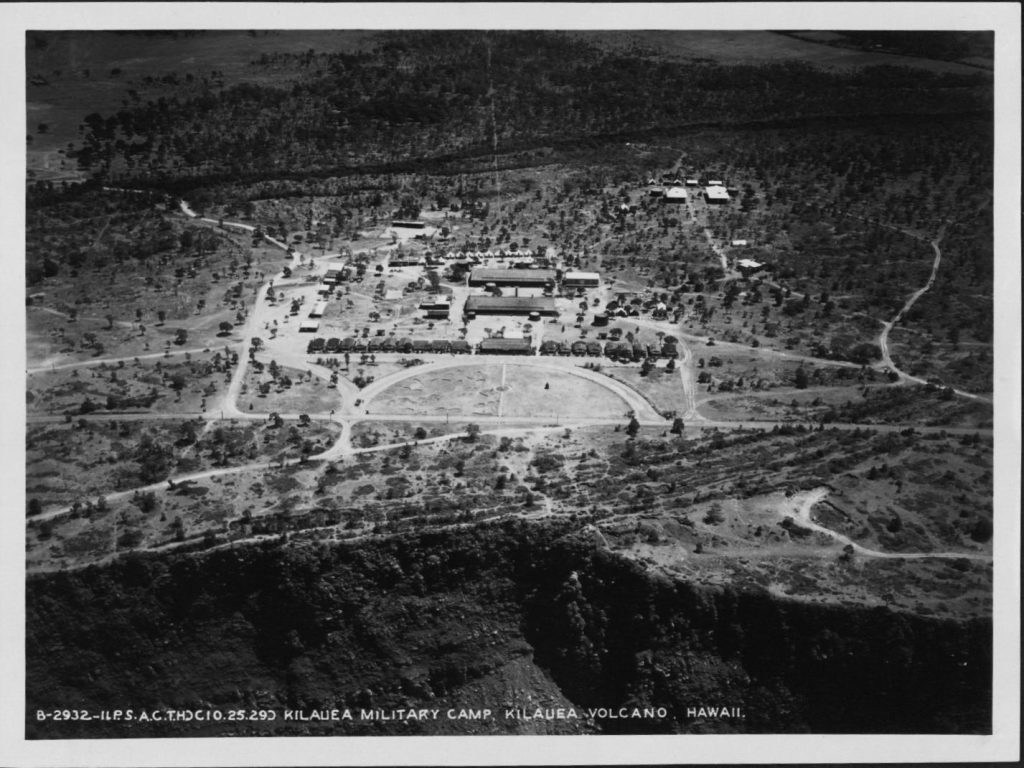
No extensive camps of instruction were held during 1915, but in 1916 the entire 1st Regiment of Infantry and the 1st Separate Company of Engineers engaged in a field training period, with troops of the Regular Army, from November 19 to 25, both dates inclusive. This encampment was held at Red Hill, Oahu, and was productive of satisfactory results.
There were present at this camp 50 officers and 731 enlisted men of the 1st Infantry, 3 officers and 41 enlisted men of the 1st Separate Company of Engineers, and 1 officer and 15 enlisted men of the Medical Detachment of the 1st Infantry.
In addition, and prior to this encampment, overnight battalion camps were held at the Punchbowl rifle range by all battalions of the 1st Regiment.
Field training for new units of the National Guard stationed on islands other than Oahu, was impracticable during the biennial period just closed owing to lack of equipment of all classes.
During 1916 a semi-permanent camp or cantonment has been constructed near the Volcano House, Island of Hawaii, funds for the same being raised by public subscription among the citizens of Hawaii. This camp will be used, not only by National Guard troops, but also by troops of the Regular Army.
– 1915-1916 Annual Report pp.11-12
1917 9th-27th of November




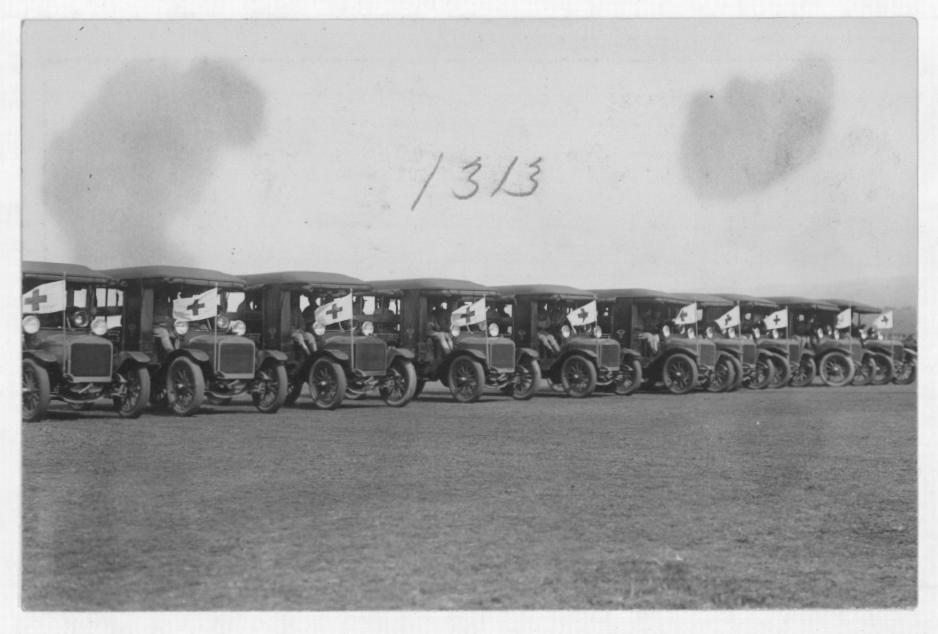
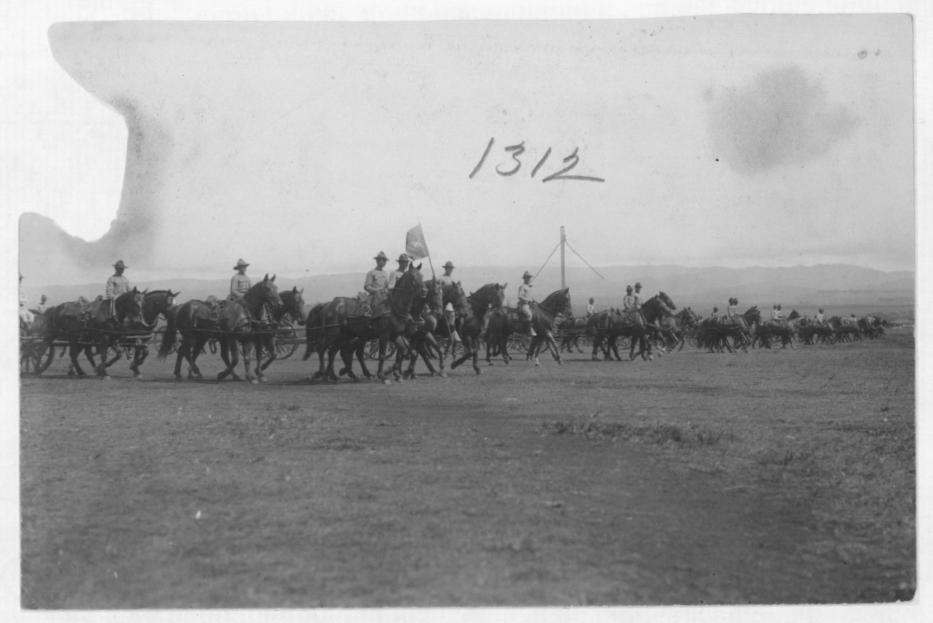
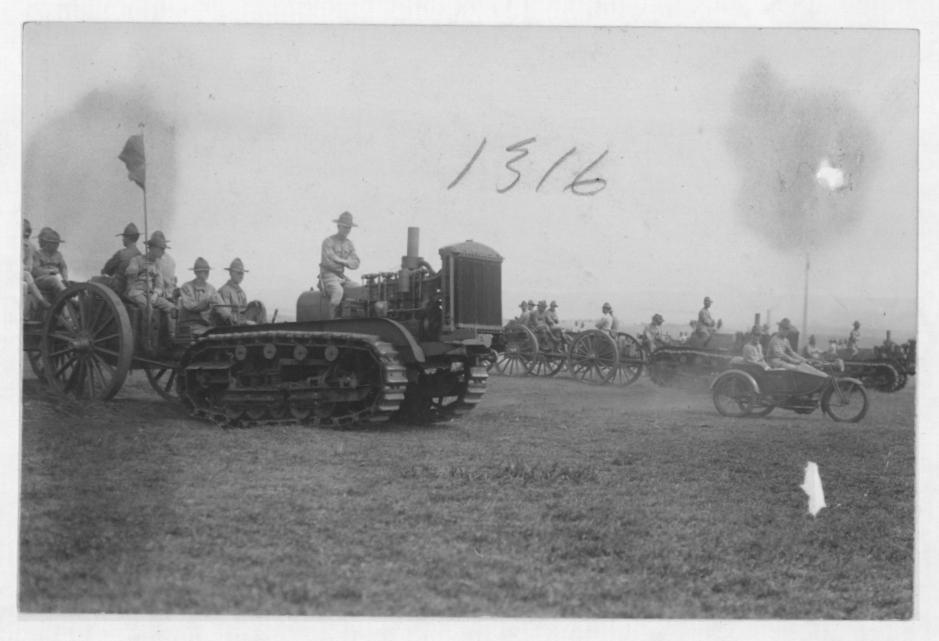
By far the most important activity of the National Guard during 1917, however, was the annual encampment held at Camp Liliuokalani, Kawailoa, Oahu, from November 9th to 27th. All of the National Guard troops participated, including Brigade Headquarters, the General Staff, the 1st Infantry, the 2nd Infantry, the 1st Separate Troop of Hawaiian Cavalry, Field Company B, Signal Corps and the Medical Detachment.
The Quartermaster Detachment and twenty-four men from Company B, 1st Infantry, proceeded to Kawailoa on the 7th of November to prepare the camp and to establish a railhead for the distribution of supplies. The 1st Infantry arrived November 9th and found the camp in readiness. With the cooperation of the Inter-Island Steam Navigation Company, the entire 2nd Infantry was in camp by the 13th, and the military activities commenced. By the following day there were 115 officers and 3,213 enlisted men of the National Guard present at Camp Liliuokalani.
A large number of regular army officers and enlisted men were assigned to this camp as instructors, and it was intended to give the Guardsmen a taste of war-time difficulties. Although considerable experience was gained by the men, the camp did not prove quite so successful as had been anticipated. General Johnson, the Brigade Commander, was compelled to be away from camp a great deal of the time, as he was attending the Reserve Officers’ Training Camp at Schofield Barracks. A large amount of valuable time was wasted in preparing for a parade in honor of several visiting congressmen. Many of the men were new and without any previous military training, due to the recent reorganization of the National Guard. Discipline was rather lax around the camp.
However, the camp did have its bright side. Sanitation was kept perfect and very few cases of sickness were reported. Meals were served regularly and were well cooked. The companies were given considerable instruction by the regular officers and gained much practical experience. This was the largest annual camp that has ever been held by the National Guard of Hawaii.
– History of the Hawaii National Guard pp. 74
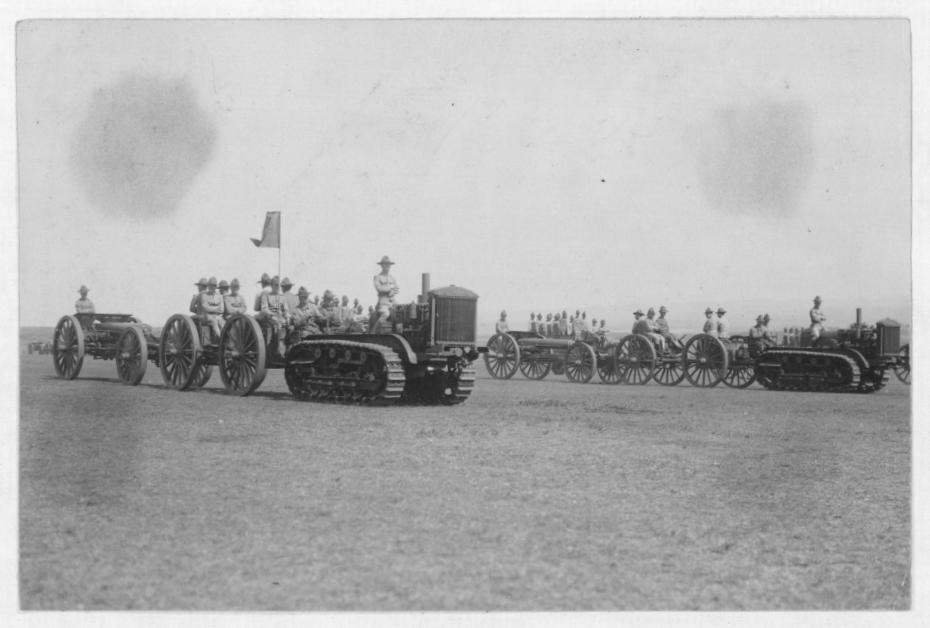




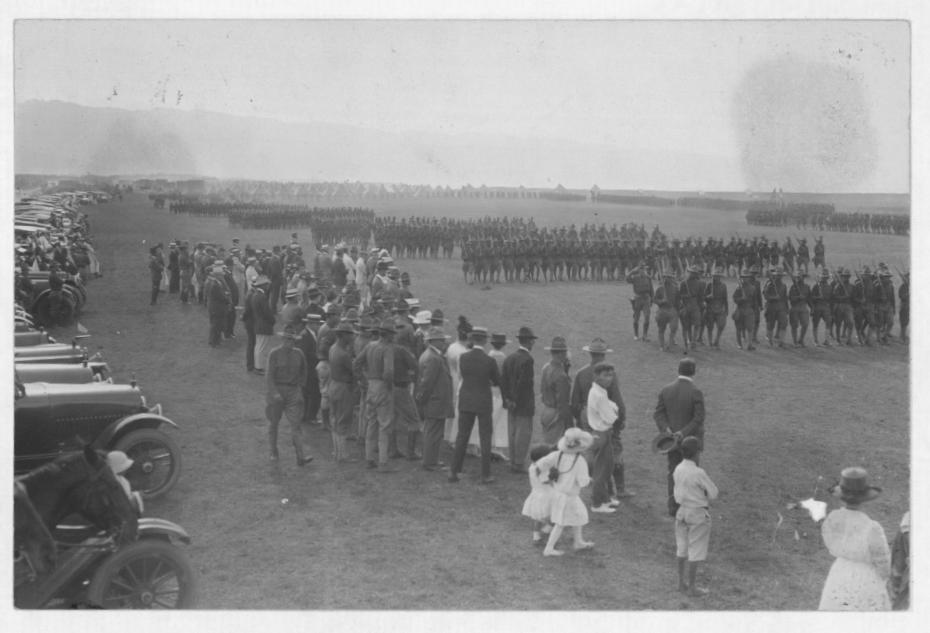
Camps of Instruction.
To comply with the provisions of the National Defense Act of June 3, 1916, relating to camps of instruction, National Guard, this office early in the month of July, 1917, began plans for the annual encampment of the First Brigade. Commanding officers of all units stationed outside of Honolulu and the Commanding General of the Hawaiian Department were communicated with as to time and possibility of securing as large an attendance as possible. The Territorial Quartermaster was instructed to prepare a schedule for the transportation of troops and equipment; also an estimate for the Federal allowance.
All arrangements having been completed, the entire National Guard was ordered into camp at Kawailoa, Oahu, by authority of the Commanding General, Hawaiian Department, General Orders No. 35, 1917, for a period of fifteen days, comencing November 9, 1917, the troops ordered to participate being as follows:
- Brigade Headquarters.
- Staff Corps and Departments, Hawn. N.G.
- First Hawaiian Infantry, (less one company).
- Second Hawaiian Infantry.
- First Separate Troop of Hawaiian Cavalry.
- Field Company B, Hawaiian Signal Corps.
- Detachments, Hawaiian Medical Departments.
These were preceded by a detachment composed of members of the Quartermaster Corps and 24 men of Company B, 1st Hawaiian Infantry, sent out on November 7, 1917, to prepare a camp site and establish a station as distributing point of supplies for the Staff Corps and Departments.
The entire Brigade was in camp by the thirteenth of November, the Second Regiment and the Troop of Cavalry. having been mobilized from the stations outside of Honolulu in four days, there being under canvas 115 officers and 3213 enlisted men, and from that time to the close of the camp, with an average attendance of approximately 110 officers and 3150 enlisted men. This is by far the largest body of National Guard troops ever assembled in one camp in this Territory.
A large detail of officers and enlisted men of the Regular Army with Major, then Captain Edward F. Witsell as Senior Inspector-Instructor, was furnished for instruction purposes by orders of the Commanding General, Hawaiian Department. The instruction was comprehensive and was ably conducted. The highest praise must be extended to these officers and enlisted men for their zealous work and the interest taken by them to see that all officers and enlisted men of the Guard were properly instructed in their duties.
The officers and men of the Guard showed their willingness at all times by their presence at drills and lectures given, but it is to be regretted, as reports show, that the schedule prepared for the work of the Brigade while in camp was interrupted by what was apparent to be a loss of time in preparing for reviews and formations for picture taking which consumed about three days and which should have been used to better advantage. This interference and the almost continual absence of the Brigade Commander from the camp was the cause of much adverse comment and dissatisfaction.
The sanitation of the camp was exceptionally good considering the large proportion of inexperienced officers and men. Credit for this must be given to medical officers of the Army who ably assisted the medical officers of the National Guard.
The discipline started very lax. This was due to the fact that this was the first experience of the great majority of the men in a military camp under officers and enlisted men of the Regular Army, but marked improvement was noticeable before the close of the camp.
Although it was claimed that the camp was not as successful as it might have been, yet a great deal was learned by the officers and enlisted men of the Guard which proved of value when the Guard was again mobilized for induction into the Federal Service. In future camps, steps will be taken to prevent the occurrence of the things complained of, and it is believed that good results will be gained by past experience.
With only a very small number of officers and enlisted men remaining in the Guard, no encampment was held this year.
– 1917-1918 Biennial Report pp. 9-11



1918
With only a very small number of officers and enlisted men remaining in the Guard, no encampment was held this year.
– 1917-1918 Biennial Report pp. 11
1919
The first camp of instruction held after the War was during September, 1920
– History of the Hawaii National Guard pp. 92